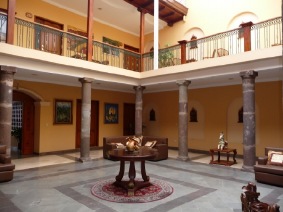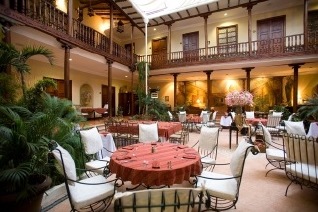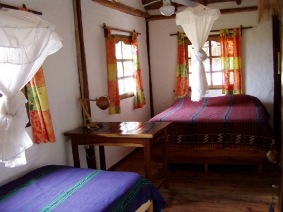What makes this trip special?
Stunning pre-columbian art
Casa del Alabado - Quito
Quito's past
Quito City Museum
The kingdom of Quito
Quito - old city
Yumbo civilisation
Rumipamba
The god at the centre of the earth
La Florida
Astronomical pools
Tulipe
Lush forest, indigenous communities & wild pacific coast
Puerto Lopez - Pacific Coast
Itinerary
-
- Day Overnight
-
1
Quito
-
2
Quito
-
3
Quito
-
4
Quito
-
5
Cuenca
-
6
Cuenca
-
7
Cuenca
-
8
Puerto Lopez
-
9
Puerto Lopez
-
10
Puerto Lopez
-
11
Guayaquil
-
- For the detail of each day click the ‘Day-by-day’ tab above.
Day-by-day itinerary for 'Lost Civilisations'
City Museum & Casa del Alabado
Cable car, Rumipamba & Central Bank Museum
Ingapirca & Cañari culture
Machalilla, Agua Blanca & Los Frailes
Guide prices for 'Lost Civilisations'
| options |
based on |
all year |
low season |
mid season |
high season |
peak season |
other season |
| Guide price |
2 people sharing |
£2,650 |
|
|
|
|
|
Prices are per person and include:
- all travel in Ecuador
- all accommodation
- meals as indicated B=breakfast, L=lunch, D=dinner
- all excursions as described
Prices do not include:
- international flights
- travel insurance
- airport and departure taxes
- items of a personal nature such as drinks, tips, laundry, etc
- any optional excursions you may buy locally
Customer reviews for
'Lost Civilisations'
Recent reviews are shown here from holidays based on this initial design. In each case the itinerary may have been modified
(a little or a lot) to suit the individual traveller.
Seasonal information for 'Lost Civilisations'
Hotels for 'Lost Civilisations'
Days 1 - 3
Plaza Sucre, Quito
historic quarter
Hotel Plaza Sucre is a good functional mid-range B&B located in Quito's historic quarter, four blocks back from its main sights and squares.
There are 25 comfortable guest rooms each with TV and private bathrooms.
The 4th floor rooftop breakfast room has wonderful views out to the Panecillo monument which stands guard over the city.
No lift.
For other meals there are several restaurants in easy walking distance in the well policed historic centre.

Inner courtyard
Days 5 - 7
Santa Lucia
downtown Cuenca
Average rating 4.3 (9 ratings)
Built by the provincial governor in 1859, this mansion is set around three internal courtyards and in the manner of the best houses of that time was beautifully restored and converted into a first rate hotel, opening in 2002. The style is traditional and opulent with polished wood floors, luxurious fabrics and period furnishings, with the courtyard layout bringing a sense of quiet spaciousness. Hostería Santa Lucia has 20 bedrooms, each well furnished and generously sized and is conveniently located for independent city sightseeing.

Internal courtyard
Days 8 - 10
Mandala
Puerto Lopez
Average rating 5.0 (2 ratings)
Friendly hippyish, nicely done back packers place. Beach front location on the edge of the town. Wooden cabins nestling amid exuberant tropical garden foliage. We have a restaurant and bar, tourist information services in 5 languages, wireless internet connection, a games room, a music room, a video room, private hammock cabanas on the beach, a book exchange and reference library, laundry service and private car park.

Double cabin